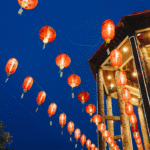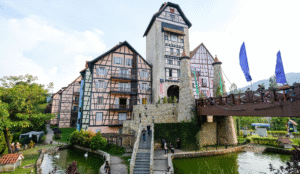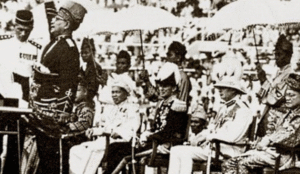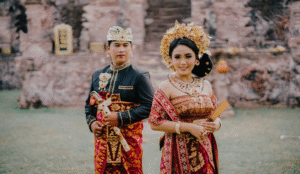Language Diversity in Malaysia: Its Culture and Heritage
Step into the vibrant streets of Kuala Lumpur or the serene villages of Sabah, and you’ll immediately sense one thing—language diversity. Malaysia is more than just a country; it’s a beautiful tapestry woven from many tongues, cultures, and traditions. From Malay and English to Mandarin, Tamil, and indigenous dialects, each language tells a story of migration, trade, and unity in diversity.
In this article, we’ll explore the languages spoken in Malaysia, this rich language diversity is not just a feature of Malaysia’s identity, but a living expression of how culture, history, and community coexist, how to learn Malaysia language basics, and why linguistic and cultural diversity play a central role in shaping the nation’s identity.
Frequently Asked Questions (FAQ)
1. How many languages are spoken in Malaysia?
Malaysia is home to more than 130 languages, reflecting its rich mix of ethnic groups and traditions. Explore how this multilingual culture shapes everyday life across the nation.
2. What is the linguistic diversity in Malaysia?
The linguistic diversity in Malaysia highlights the coexistence of Malay, English, Chinese, Indian, and indigenous languages, each playing a vital role in the country’s cultural identity.
3.Is Malaysian language easy to learn?
Yes, Bahasa Malaysia is one of the easiest Asian languages to learn. Its simple grammar and phonetic structure make it perfect for beginners eager to connect with locals.
4. What is the easiest language to learn in Malaysia?
Bahasa Malaysia is considered the easiest language to learn in Malaysia. Its straightforward pronunciation and grammar help learners communicate confidently within a short time.
5. What is the importance of language diversity?
Language diversity is essential to Malaysia’s unity and cultural harmony. It fosters understanding among communities and preserves the unique heritage of every ethnic group.
The Historical Roots of Malaysia’s Language Diversity
Early Trade and Migration: The Birth of a Multilingual Society
Malaysia’s linguistic richness didn’t emerge overnight. Centuries before it became a nation, the Malay Peninsula served as a bustling hub for traders from India, China, and the Middle East. These interactions gave rise to a blend of languages that gradually became part of daily life. This early blend of tongues marks the beginning of Malaysia’s language diversity, influenced by traders, travellers, and cultural exchange.
Malay, the lingua franca of the region, absorbed words from Sanskrit, Arabic, and Portuguese, creating the foundation for Bahasa Malaysia, the national language. Meanwhile, the influx of Chinese and Indian communities during the colonial era expanded the linguistic landscape further.
Colonial Influence and Language Shifts
The British colonization of Malaya left a lasting mark on education and administration. English became the medium of instruction and business communication, positioning it as a key language even after independence.
This historical layering of languages contributed to Malaysia’s unique multilingual ecosystem. The evolution of Malaysia’s language diversity shows how every era added a new linguistic layer that still exists today. One where traditional tongues coexist with modern linguistic needs.
Languages Spoken in Malaysia Today
Malaysia’s Constitution recognizes Bahasa Malaysia (Malay) as the national and official language, but in daily life, the nation’s people speak a vibrant mix of other languages too.
- Bahasa Malaysia: The Unifying Thread
Bahasa Malaysia, rooted in the Malay language, is more than just a communication tool—it’s a symbol of national unity. It’s taught in schools, used in government, and celebrated as a cornerstone of Malaysian identity.
It’s simple grammar and melodic rhythm make it approachable for those looking to learn Malaysia language for travel or business. Even with so many languages spoken nationwide, Bahasa Malaysia remains the core that connects all communities while allowing language diversity to flourish.
- English: The Lingua Franca of Global Malaysia
English continues to play a major role in education, business, and international relations. Many Malaysians are bilingual, switching effortlessly between Malay and English depending on the context.
This bilingualism not only boosts communication but also strengthens Malaysia’s position as a global business hub.
- Chinese Languages and Dialects
Around a quarter of Malaysians have Chinese heritage, contributing to a diverse set of Chinese languages such as Mandarin, Cantonese, Hokkien, Teochew, and Hakka. The presence of multiple Chinese dialects further enriches Malaysia’s language diversity, proving that heritage languages can survive alongside national and global ones.
Mandarin dominates education and media, while regional dialects preserve cultural roots within local communities.
- Tamil and Other Indian Languages
Tamil is the primary Indian language spoken in Malaysia, mainly by the South Indian Tamil community. However, smaller groups speak Telugu, Malayalam, Punjabi, and Hindi, reflecting India’s own linguistic mosaic.
- Indigenous and Regional Languages
In Sabah and Sarawak, indigenous communities preserve their ancestral languages such as Kadazan-Dusun, Iban, Bidayuh, and Bajau. These languages are integral to local identity and traditional rituals.
Each carries ancient knowledge, myths, and expressions unique to its people—an irreplaceable part of Malaysia’s linguistic and cultural diversity.
The Role of Language in Shaping Cultural Identity
Language as a Mirror of Tradition
Every Malaysian language reflects a different worldview. Malay poetry expresses harmony and respect; Chinese proverbs teach wisdom; Tamil songs celebrate devotion and love. These cultural imprints make Malaysia a treasure trove of linguistic expression.
Festivals and Communication
During cultural festivals like Hari Raya, Chinese New Year, and Deepavali, language bridges communities. Greeting someone with “Selamat Hari Raya,” “Gong Xi Fa Cai,” or “Vanakkam” embodies mutual respect and understanding.
This dynamic interplay of languages fosters inclusivity and unity among Malaysia’s multicultural citizens.
Education and Multilingualism in Malaysia
National Schools and Vernacular Education
Malaysia’s education system embraces multilingualism. Students in national schools study primarily in Malay, with English as a second language. Vernacular schools offer instruction for educational model not only preserves language diversity but also empowers students to navigate different cultural spaces confidently. In Mandarin or Tamil, ensuring cultural continuity for each community.
This approach strengthens cognitive skills and nurtures open-mindedness, helping younger generations appreciate language diversity from an early age.
The Importance of English in Higher Education
Universities and international colleges in Malaysia often use English as the main language of instruction. This makes the country attractive for foreign students and prepares local graduates for global careers.
Preservation Efforts for Indigenous Languages
Government and NGOs are working together to document and teach endangered indigenous languages. Programs like the Kadazandusun Language Foundation promote the use of native tongues in schools and local media.
The Linguistic and Cultural Diversity in Daily Life
Code-Switching: A Malaysian Phenomenon
Walk into any Malaysian café and you’ll likely hear “Manglish”—a unique blend of Malay, English, and local slang. Phrases like “Can lah!” or “Don’t play-play!” are quintessentially Malaysian, showing how cultures and languages merge creatively.
This casual code-switching embodies the nation’s multicultural charm. Code-switching is possible only because Malaysians grow up surrounded by natural language diversity, making multilingual communication effortless.
Language in Media and Entertainment
Malaysian television, radio, and online platforms reflect the multilingual reality of the country. Programs often mix Malay, English, Mandarin, and Tamil to appeal to diverse audiences.
This inclusivity ensures that every group feels represented in the national narrative.
Learning Malaysia Language: A Gateway to Understanding Culture
Why Learn Malaysia Language?
Learning Malay is just the beginning; understanding the country’s language diversity helps foreigners appreciate Malaysia beyond tourism and into cultural belonging. To learn Malaysia language is to connect with its people. Whether you’re a traveler, student, or business professional, understanding Malay opens doors to local experiences and friendships.
Malay grammar is relatively simple—no verb conjugations or plural forms, making it one of the easiest Asian languages for beginners.
Tips for Beginners
- Start with common phrases: Learn greetings like “Apa khabar?” (How are you?) and “Terima kasih” (Thank you).
- Immerse yourself: Watch Malay dramas or listen to local songs to get a feel for pronunciation and rhythm.
- Practice daily: Use apps or speak with locals to strengthen your vocabulary.
Language as Cultural Immersion
Learning the local language helps foreigners appreciate Malaysia’s customs, humor, and traditions. It transforms visits from tourist experiences into authentic cultural exchanges.
Language and Business in Malaysia
Multilingual Advantage in Commerce
In Malaysia’s competitive economy, being multilingual is a significant asset. Businesses that adapt their communication to different language groups can reach wider audiences and build stronger trust.
For example, marketing campaigns often use a mix of Malay, English, and Chinese slogans to appeal across demographics.
Globalization and the Rise of English
English’s prominence in business aligns with Malaysia’s vision to be a global trade center. Yet, maintaining language diversity ensures that modernization doesn’t erode cultural heritage.
Challenges Facing Malaysia’s Language Landscape
Language Hierarchies
Some worry that English and Mandarin dominance may overshadow smaller languages. Striking a balance between global communication and local preservation remains a national concern.
Endangered Indigenous Languages
The loss of native tongues would mean losing centuries of language diversity that shaped Malaysia’s identity and oral traditions. With urbanization and migration, some indigenous tongues face extinction. Younger generations often shift to Malay or English for convenience, risking the loss of cultural heritage.
Policy and Preservation
The government’s ongoing efforts aim to revitalize these languages through education, documentation, and cultural festivals that celebrate linguistic diversity.
The Global Perspective: Lessons from Malaysia
Malaysia’s success in managing multilingualism offers lessons for other nations. It shows that linguistic and cultural diversity need not be divided but can unite people under shared respect and understanding.
By treating each language as a cultural asset, Malaysia demonstrates how harmony can thrive amid diversity.
The Role of Multilingualism in Social Harmony
Language in Malaysia isn’t just a form of communication—it’s a social glue that binds people from different backgrounds. The coexistence of multiple ethnicities and languages has made Malaysians highly adaptable communicators.
Daily Conversations Across Cultures
A single Malaysian conversation can blend several languages in one sentence. For instance:
“Eh, you makan already or not?”
This sentence mixes English (“you” and “already”) with Malay (“makan,” meaning eat). This linguistic fusion, commonly called Manglish, is deeply embedded in urban culture.
It’s casual, expressive, and uniquely Malaysian showcasing how language diversity can create a shared cultural identity that transcends ethnic lines.
Linguistic Tolerance and Respect
In most multicultural settings, language differences can lead to misunderstanding or division. But in Malaysia, it’s the opposite. People often take pride in learning words from other communities—like Chinese Malaysians greeting Muslims with “Selamat Hari Raya”, or Malays wishing Indian friends “Happy Deepavali.”
This respect fosters peaceful coexistence and reinforces the idea that language is a bridge, not a barrier.
Religion and Language in Malaysia
Malay and Islam
Malay identity is deeply connected to Islam. Many Arabic phrases such as “InsyaAllah” (God willing) and “Alhamdulillah” (praise be to God) are commonly used even in non-religious conversations. These expressions reflect both spiritual and cultural aspects of the Malay world.
Tamil and Hindu Practices
Among Tamil-speaking Indians, language plays a sacred role in Hindu rituals. Prayers and temple songs are often recited in Tamil or Sanskrit, preserving the linguistic link to ancient traditions.
Chinese Dialects in Buddhist and Taoist Practices
Chinese temples in Malaysia still use traditional dialects like Hokkien or Cantonese during ceremonies. The recitation of mantras and classical texts in their original language keeps ancient wisdom alive.
Through religion, the languages spoken in Malaysia serve not just practical purposes but also spiritual and cultural preservation.
The Influence of Globalization on Malaysia’s Language Landscape
Globalization has transformed how Malaysians use language. While English grows in importance for international communication, local languages are adapting rather than disappearing.
Digital Communication and Language Blending
On social media, Malaysians frequently mix languages in a single post—sometimes even within one sentence. Hashtags like #syioklah (meaning “so nice!”) or #jomlepak (“let’s hang out”) combine English with Malay expressions.
This new linguistic creativity illustrates how younger generations reshape language use in the digital age.
Technology and Language Learning
Apps like Duolingo and Memrise now include Malay courses, helping foreigners learn Malaysia language easily. Local tech innovators are also developing AI translation tools that support indigenous and regional languages.
This digital revolution ensures that Malaysia’s linguistic heritage evolves, not erodes.
Linguistic and Cultural Diversity in Art and Literature
Language as an Artistic Expression
Malaysia’s authors, filmmakers, and poets often switch between languages to reflect real-life experiences. Contemporary writers such as Tash Aw and Tan Twan Eng weave English with Malay and Chinese idioms, mirroring the nation’s hybrid identity.
Music and Multilingual Creativity
Malaysia’s music industry thrives on multilingualism. Artists like Yuna and Zee Avi sing in both Malay and English, while bands from Sabah and Sarawak perform songs in indigenous languages.
This blend not only entertains but also preserves linguistic and cultural diversity, ensuring that local voices remain heard in a globalized world.
Language Diversity and National Identity
Language forms the foundation of Malaysia’s national identity. Despite differences, the ability to communicate across cultures gives Malaysians a unique sense of belonging.
Unity Through Bahasa Malaysia
Bahasa Malaysia serves as a neutral ground—uniting people across ethnic lines. It’s used in schools, government, and the media, promoting inclusivity without erasing individual linguistic roots.
Celebrating Differences
Rather than enforcing a single linguistic norm, Malaysia’s approach celebrates variety. The existence of Chinese and Tamil schools, local-language newspapers, and multilingual television channels highlights this acceptance.
Malaysia’s model proves that harmony doesn’t come from uniformity but from mutual respect and cultural understanding.
Regional Case Studies: Linguistic Variety Across Malaysia
Peninsular Malaysia
In urban centers like Kuala Lumpur and Penang, the mix of Malay, English, and Chinese dialects is especially vibrant. Street vendors might switch languages to suit their customers—demonstrating linguistic flexibility in action.
Penang, for example, is famous for its Hokkien dialect, while Kuala Lumpur reflects more cosmopolitan influences through Manglish and English.
Sabah and Sarawak
East Malaysia, with its diverse indigenous groups, is home to dozens of native languages. In Sabah, languages like Kadazan-Dusun and Bajau are still actively spoken, while in Sarawak, Iban and Bidayuh remain vital.
Government efforts and community organizations continue to record, teach, and celebrate these dialects through cultural events and storytelling programs.
These regional linguistic variations enrich Malaysia’s national identity by highlighting how language diversity exists in every corner of the country.
Language Policy and Government Initiatives
Education as a Language Equalizer
Malaysia’s Ministry of Education ensures that every student learns Bahasa Malaysia and English. At the same time, vernacular schools provide instruction in Chinese or Tamil, promoting linguistic pluralism.
Such inclusivity ensures that children grow up fluent in multiple languages—one of the strongest markers of Malaysia’s multicultural identity.
Preservation Programs for Indigenous Languages
The government collaborates with organizations like the Kadazandusun Language Foundation and Dewan Bahasa dan Pustaka to preserve local dialects.
Efforts include:
- Developing bilingual dictionaries.
- Publishing indigenous literature.
- Promoting traditional folktales and songs in schools.
These programs reinforce the idea that linguistic heritage is an asset, not a relic.
The Future of Language Diversity in Malaysia
Digital Revitalization of Native Tongues
Younger Malaysians are using digital tools—YouTube, TikTok, and podcasts—to revive native languages. Creators post tutorials, storytelling sessions, and music in indigenous dialects, making ancient languages cool again.
This digital renaissance ensures that even lesser-known dialects find their voice in modern media.
Balancing Global and Local Languages
As English grows in professional and educational spaces, the challenge is to maintain equilibrium. Malaysia’s language policy must continue nurturing local languages while equipping citizens with global communication skills.
Language as a Source of Pride
There’s a growing movement among youth to rediscover their linguistic roots. Many are learning their grandparents’ dialects, joining cultural associations, and using bilingual content online.
This shift signals a bright future where modernization and tradition coexist harmoniously.
Practical Guide: How to Learn Malaysia Language Effectively
For travelers, students, or expatriates interested in connecting deeply with Malaysian culture, here are some practical ways to learn Malaysia language successfully:
- Start with Bahasa Malaysia
- Focus on daily phrases: greetings, numbers, and directions.
- Listen to local radio stations or watch Malay dramas to absorb the rhythm.
- Practice with locals—they’re usually thrilled to help.
- Learn from Local Context
- Visit markets or hawker centers to engage in simple Malay conversations.
- Read bilingual signs and menus; Malaysia’s multilingual signage makes this easy.
- Expand to Other Languages
- Once comfortable with Malay, explore basic Mandarin or Tamil greetings.
- Understanding these languages deepens your appreciation for linguistic and cultural diversity.
- Use Technology
- Use mobile apps for pronunciation and grammar.
- Join online communities that discuss languages spoken in Malaysia and their cultural nuances.
- Respect and Enjoy the Process
Language learning in Malaysia isn’t just academic—it’s a social experience filled with warmth, laughter, and discovery.
How Language Diversity Enhances Malaysia’s Global Image
Malaysia’s multilingualism boosts its reputation as a welcoming, cosmopolitan nation. Tourists and investors alike appreciate the ease of communication and cultural richness.
Tourism and Cultural Exchange
Guides and vendors switch languages effortlessly to cater to international visitors. This multilingual hospitality enhances the country’s appeal as a top travel destination.
Soft Power Through Language
Malaysia’s ability to navigate multiple linguistic worlds positions it as a cultural mediator in Southeast Asia. By promoting language diversity, Malaysia strengthens regional cooperation and cultural diplomacy.
Conclusion: Embracing Malaysia’s Linguistic Harmony
The language diversity of Malaysia is more than a collection of dialects—it’s a living embodiment of harmony, tolerance, and identity. Every word spoken in Malay, Tamil, Mandarin, or Iban carries echoes of the past and hopes for the future.
Malaysia’s multilingual spirit shows that language diversity is not a weakness but a strength—one that unites people across generations, beliefs, and backgrounds. As Malaysia continues to evolve, its multilingual soul remains a bridge between tradition and modernity. Whether you’re eager to learn Malaysia language or simply fascinated by the languages spoken in Malaysia, one thing is clear: the nation’s linguistic beauty lies in its unity through diversity.





